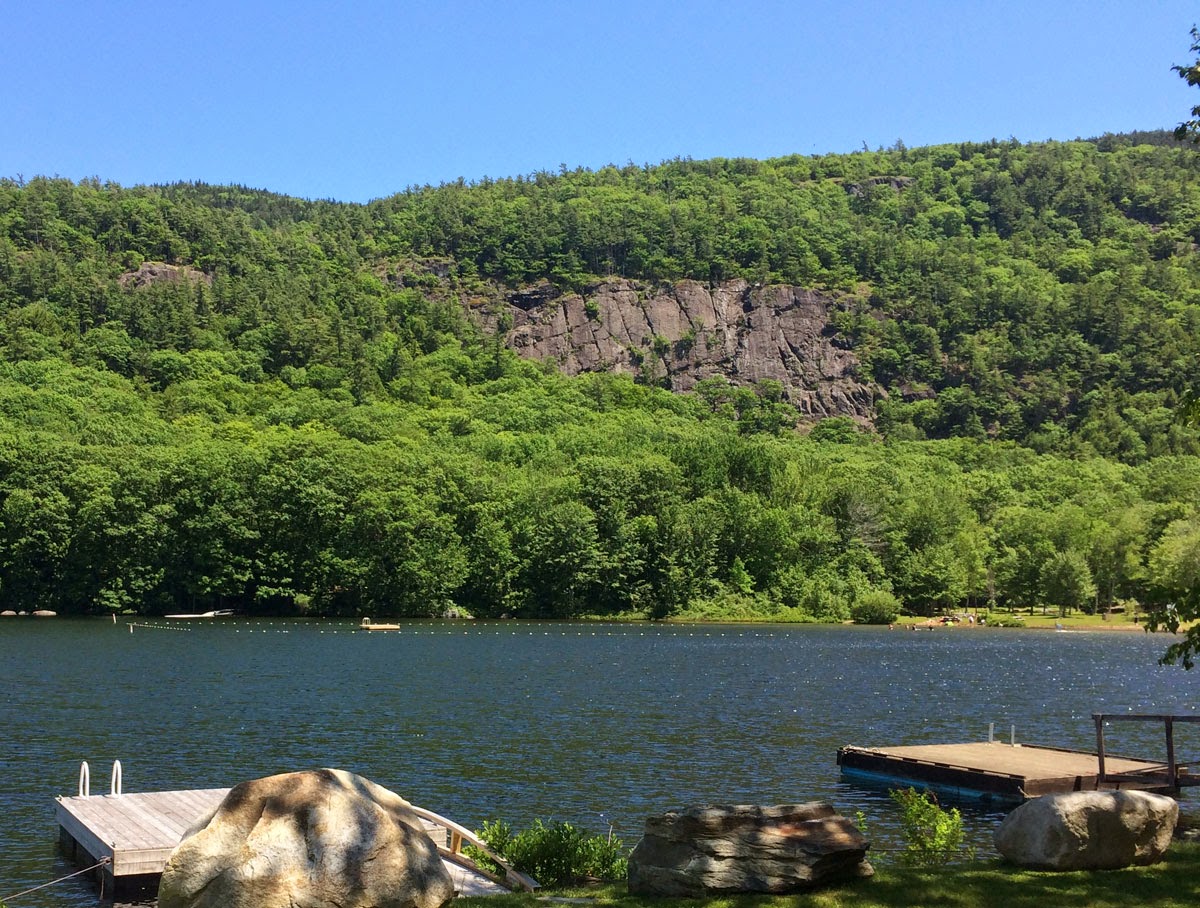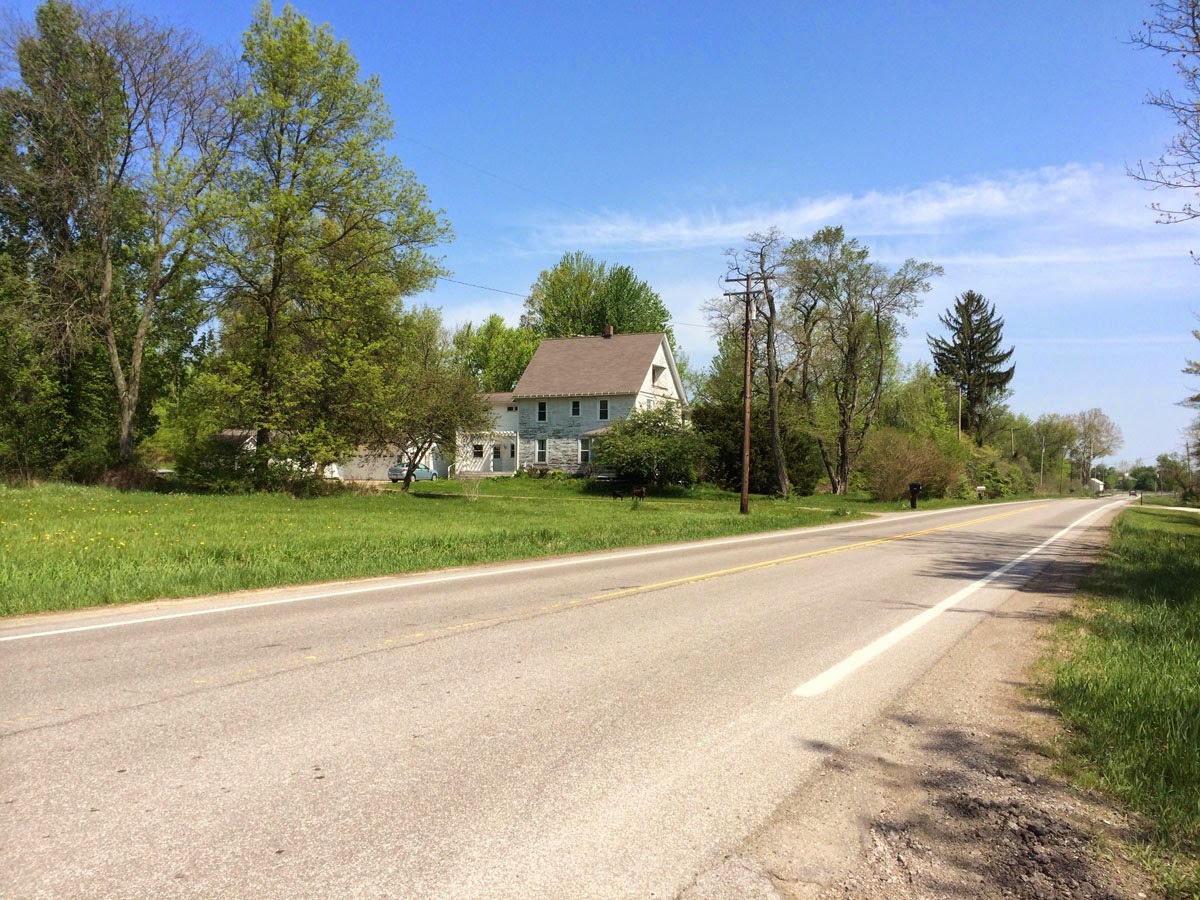Okay, this is it. I am finally down to my final thoughts about my six-week, 1,822-mile tour of the Underground Railroad Bicycle Route from Mobile, Alabama, to Niagara Falls, Ontario. In no particular order...
- Wow. This is a vast beautiful country. I had flown across the country before, so I knew it from that perspective. It's a whole different thing, though, to see it on the ground, up close and personal, mile after mile, out in the open air, talking to locals along the way. Before this trip, I never had any yearning to see the states of Alabama, Mississippi, Tennessee, Kentucky, Illinois, Indiana, and Ohio. I am now so pleased that I have seen them. Every state has beauty in its landscapes and in its people. Over and over during the tour, I would think, "I could live here!"--which surprised me. I now realize that I could live in lots of different places; it opens up the world for me.
- If opossums and turkey vultures join forces, they could take over the world. Just sayin.' (I did not know before doing this trip that every state has a whole lot of opossums and turkey vultures.)
- Was I happy with how much Underground Railroad history I learned on this trip? Yes and no. I think the trip leaders should have been given a notebook of information about the Underground Railroad and about the related sites and history along the route. That would have made it easier to know and take advantage of everything there was to learn and see along the way. So much of our energy was used every day to bicycle the miles and take care of the basics (setting up camp, cooking, doing laundry, etc.) that we didn't have much time and energy left over to do a lot of research. Also, we missed seeing a number of museums and sites because we hit them when they were closed. All that said, though, I think we saw an amazing number of sites along the route. I figured out after I got home that, by ending the trip at Niagara Falls instead of the route's official end point (Owen Sound, Ontario), we missed a whole slew of historical sites in Canada. Apparently there are more than 30 sites in the Owen Sound area alone where black settlers lived, worked, and were buried. I guess I might have to plan another trip...
- I discovered that, if I just keep pedaling, I can cover a lot of ground. I now feel like I can bicycle anywhere. I'm not too proud to walk a super-steep hill every now and then. Walking stretches out my sore feet, saves wear and tear on my knees, and doesn't slow me down all that much; I still get where I'm going.
- Even though I did not think that I needed a confidence boost, this trip definitely gave me one anyway. Successfully navigating 1,800-plus miles, and riding most of those miles by myself, was empowering. I feel like I can accomplish anything I choose!
- I have always had good gut instincts but, too often, I have ignored them or second-guessed them. I worked hard during this trip to pay attention to my gut instincts and trust them. This worked well for me; it's a skill I hope to continue to hone.
- Having now spent six weeks without TV or movies, without constantly listening to music, with minimal phone calls, and with limited Internet access, I think normal life is cluttered with over-stimulation. I think multi-tasking is bad for our well-being and adds unnecessary stress to our lives. Now that I am home, I am making a concerted effort to limit my exposure to the normal bombardment of daily stimulation, focusing on fewer things at one time.
- I love bicycling! Yes, even after bicycling all those miles, and even after suffering the consequences of overdoing it a bit. (See next bullet item.) A week after I got home, I rode the 62-mile route of the Maine Women's Ride, sponsored by the Bicycle Coalition of Maine every year in early June. That route kicked my butt; it was a very real reminder that Maine is hilly! It was a gloriously beautiful day, though, and I saw more scenic wonder (sweeping views of the rocky coast, pastures, farm animals and fields, mountains, hills, and trees) per mile than anything I saw during my UGRR trip--which was a nice reminder of why I love Maine so much.
- I learned the hard way that it is, indeed, possible to overdo something I love, to get too much of a good thing. I said in some blog posts during the trip that I had learned that I am not a 60-70 mile-a-day rider because riding that many miles turns a pleasurable thing into a bit of misery. Well, it's actually worse than that. Riding all those miles day after day did a bit of nerve damage. My two big toes and the heels of my hands still have some numbness. Riding 62 miles on the Maine Women's Ride (see previous bullet item) exacerbated this problem; when I finished the ride, I couldn't lift my hands above my shoulders. Not good! To try to turn this situation around, I am seeing a chiropractor three days a week. I am also limiting my rides to much shorter distances--6 to 25 miles at one time.
- Other than the nerve damage, I am in better physical shape now. I am 40 pounds lighter than I was in early January. I lost most of the weight while training for the tour, but I continued to lose weight on the trip (and afterwards too). My legs are amazingly strong now. I need to get back in the gym to continue toning my arms and abs. Strangely, I don't feel that different than I did before, which makes me think I will have to be vigilant to make sure I don't pack the pounds back on.
- Was buying the fat bike worth it? A resounding "yes!" to that one. It not only gave me a way to get some pre-trip riding in, it gave me a physical activity that I enjoy doing outdoors during the winter. I had the best winter in many years. I have continued to ride the bike some since I've been home, and I am looking forward to riding some trails that my road bike would never be able to handle.
- Did I have any great insights during the tour about what I might eventually do for paid employment? Not exactly. I had a lot of fantasies and entertained many partially-formed ideas. I would definitely like to find something high on the love scale and low on the stress scale. Thankfully, I'm not feeling anxious about this, and I'm not currently looking for work. I have some other things to focus on first. (See next bullet item.)
- What's next? I am back to working on building the house I began years ago but let sit untouched for three years. I will be updating my blog about that project soon. I am doing shorter bicycle rides two or three days a week.
- Will there be any more long bicycle tours in my future? Maybe. I will either have to find a tour that plans fewer miles a day and more layover days, or I will have to design my own. I did a mini trip to Camden, Maine, this week that worked well. I camped overnight at a state park and did a 28-mile loop ride in Camden on a perfect day for bicycling. It was a hilly route but doing fewer miles gave me lots of opportunities to stop to take pictures, eat snacks, visit parks, take rests, etc. It was fun and didn't tax my body too much. (As a bonus, I got to visit with two of the UGRR riders who have started riding the 4,407-mile Northern Tier route from Bar Harbor to Seattle.) Here are photos and a route map from my Camden ride:
Downtown Camden is quaint, with great views of the hills...
and harbor...
Sunday morning is when a lot of the schooners leave for their week-long cruises...
Many years ago, I spent a week on the Mary Day...
Kayak tours leave from here as well...
Many years ago, I brought a group of teenagers to an evening performance of a Shakespeare play in this outdoor theater.
Bay View Avenue (miles 4-5) has many estates and, occasionally, a glimpse of the water...
Further inland (miles 6-22), there are great views of the Camden Hills outcroppings...
...and lots of freshwater views.
Nice town park in Lincolnville (mile 15):
Ocean view (mile 23.5):
Ocean views from the Shoreline Trail at Camden Hills State Park (mile 26):


















































